The TCL C6K is a television for those who want to combine gaming and watching movies with good contrast, without spending a fortune. Thanks to the VA panel with Mini-LED backlighting, blacks are deep and contrast is high, so evening screenings look truly spectacular. Additionally, it offers decent brightness, which, combined with Dolby Vision, makes movies take on a cinematic character. The fluidity of the image is also significant – the 144Hz refresh rate does wonders for sports and dynamic games, and gamers get a full package of extras: VRR, ALLM, HDMI 2.1, HGiG, and even a 240 Hz mode in PC. On a daily basis, the television is powered by Google TV, which offers a ton of apps and the Gemini AI voice assistant, making operation convenient and flexible. It's also worth mentioning the sound – support for Dolby Atmos and DTS gives the impression that the equipment is ready not just for gaming. As is often the case, there are a few things that could be improved. The backlighting in difficult scenes can lose details or wash out blacks, and Polish translations in the menu can be so clumsy that one has to wonder what they actually mean. Despite this, the overall performance holds up very well, and given the price, the TCL C6K could be one of the more interesting choices for someone looking for a versatile television for movies, sports, and games. Especially when a good promotion comes along – and when TCL traditionally polishes up the details in updates.
- Matching (Score)
- Our verdict
- TV appearance
- Where to buy
- Contrast and black detail
- HDR effect quality
- Factory color reproduction
- Color reproduction after calibration
- Smoothness of tonal transitions
- Image scaling and smoothness of tonal transitions
- Blur and motion smoothness
- Console compatibility and gaming features
- Input lag
- Compatibility with PC
- Viewing angles
- Daytime performance
- Panel details
- TV features
- Apps
- Playing files from USB
- Sound
TCL C6K vs TCL C6KS / C69KS / Q6CS
Direct comparison
C6K
C6KS / C69KS / Q6CS
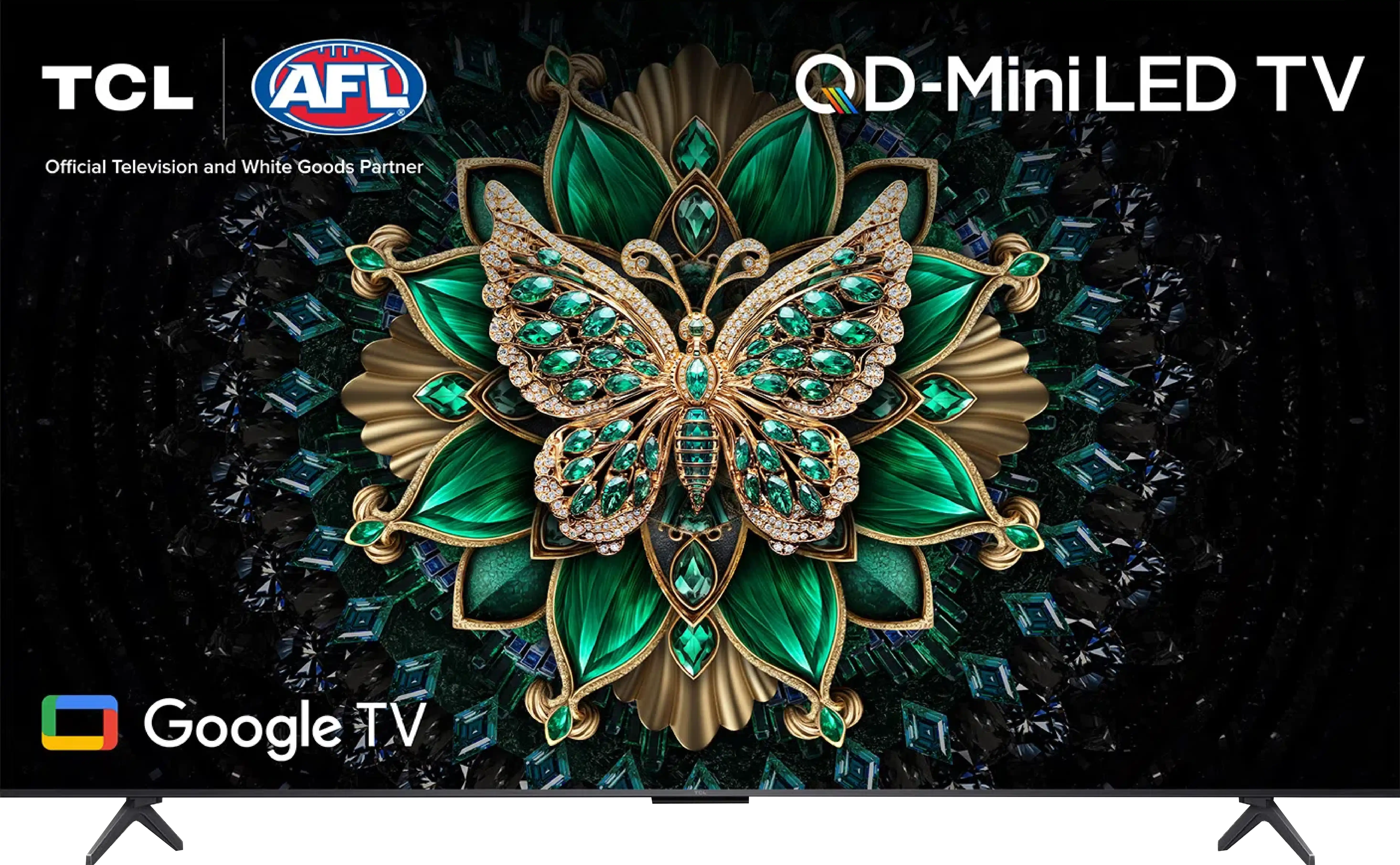

Panel type: LCD VA
Resolution: 3840x2160
System: Google TV
Model year: 2025
Complete the survey to find out the result

Panel type: LCD VA
Resolution: 3840x2160
System: Google TV
Model year: 2025
Complete the survey to find out the result

Overall rating
7.1
6.4
Movies and series in UHD quality
6.7
5.9
Classic TV, YouTube
6.6
6.1
Sports broadcasts (TV and apps)
6.3
5.3
Gaming on console
8.4
7.7
TV as a computer monitor
8.6
1.7
Watching in bright light
6.4
6.6
Utility functions
7.0
7.0
Apps
9.6
9.6
Sound quality
6.5
6.5
Complete the survey to find out what fits your preferences
Advantages
Very good contrast and black level: VA panel and MINI-LED backlighting
Good motion fluidity: High refresh rate of 144Hz
Decent panel brightness
Many features for gamers: VRR, ALLM, HDMI 2.1, HGiG
Additional mode for PC gamers: 240Hz
Google TV system with a wide selection of apps
Support for multiple HDR formats including Dolby Vision
Support for Dolby Atmos and DTS
Very attractive price
Very good contrast and black: VA panel and MINI-LED backlighting
Pretty high (around 600 nits)
Many features for gamers: VRR, ALLM, HGiG
Additional mode for gamers: 120Hz and 144Hz
Google TV system with a wide range of applications
Support for multiple HDR formats including Dolby Vision
Support for Dolby Atmos and DTS
Quite pleasant sound from the built-in speakers
Disadvantages
Managing the backlighting could be better
Language errors in the system
The matrix is heavily smudged
Strong visible dithering (looks like artificial 4K)
Very poor compatibility with PC
Minor system errors
Significant chaos in naming (many derivative models that differ in no way)
Our verdict
TCL C6KS (also known as C69KS and Q6CS) is a television that on paper promised to be a hit in the "value for money" category. And indeed, in many ways it's a successful piece of equipment: thanks to Mini-LED backlighting, we get good black levels and brightness that rivals more expensive models. In fact, it's identical to the slightly more expensive C6K model, which we've already tested for you. Additionally, it features the same excellent Google TV system and surprisingly rich gaming features, making it enjoyable to play even with a 60 Hz panel. Unfortunately, the positive impression is marred by the performance of the panel used. The television suffers from noticeable motion blur, and aggressive dithering (digital grain) makes the image often appear unnatural and artificial—as if it were being forced to be sharper. Ultimately, the biggest problem with the C6KS isn’t its flaws, but rather its sibling, the C6K. At its current price, this model finds itself in a strange "middle ground." It costs almost the same (or just slightly less) as the full-fledged TCL C6K, which offers a significantly better 120 Hz panel and is simply a complete design without those annoying flaws. The C6KS is a compromise model that will only become attractive under one condition—if its price drops drastically. For now, opting for the (often symbolic) additional cost to the C6K model remains a much safer and better choice. One could mischievously state that the letter "S" in the name actually stands for "Slim." It's just that it's not about an exceptionally slim case, but about how much this model has been "slimmed down" in terms of capabilities compared to the full-fledged C6K.
TV appearance

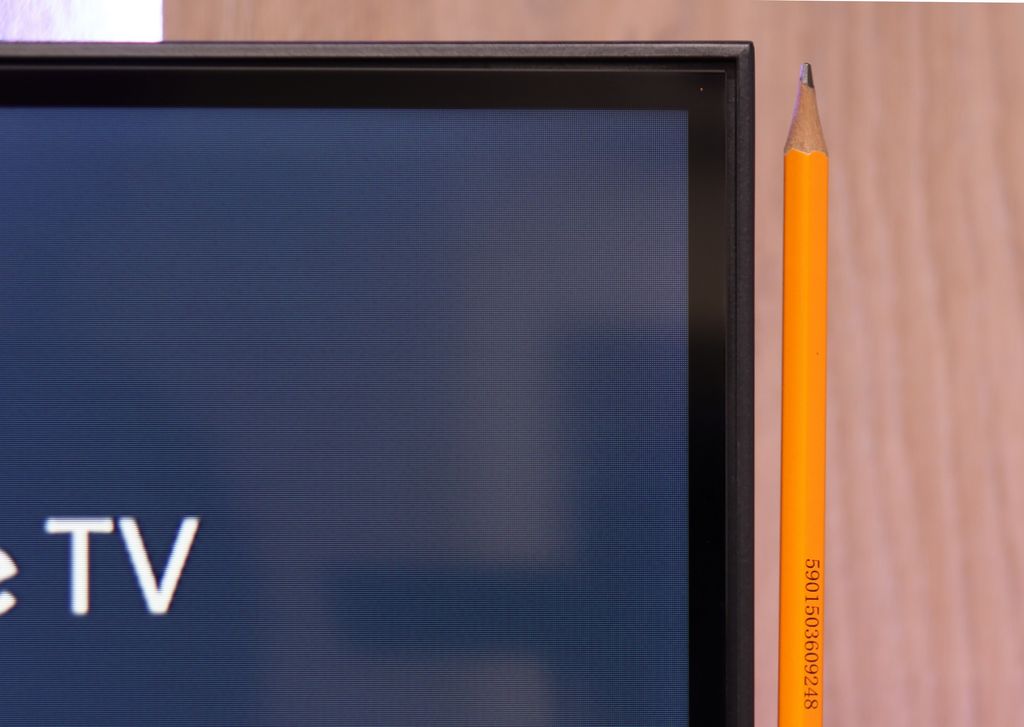
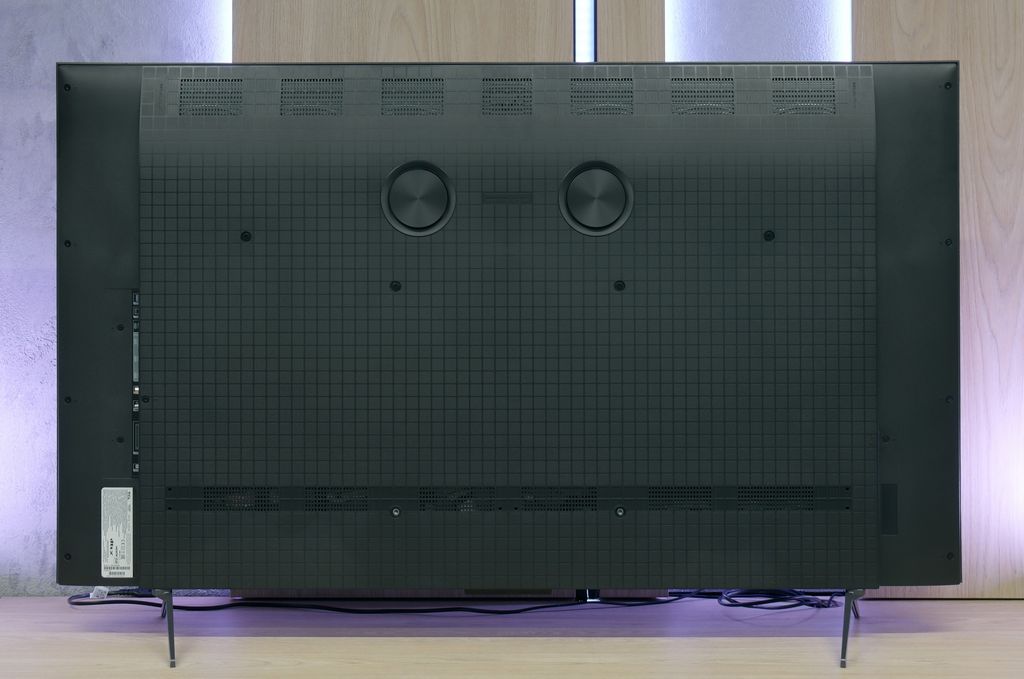

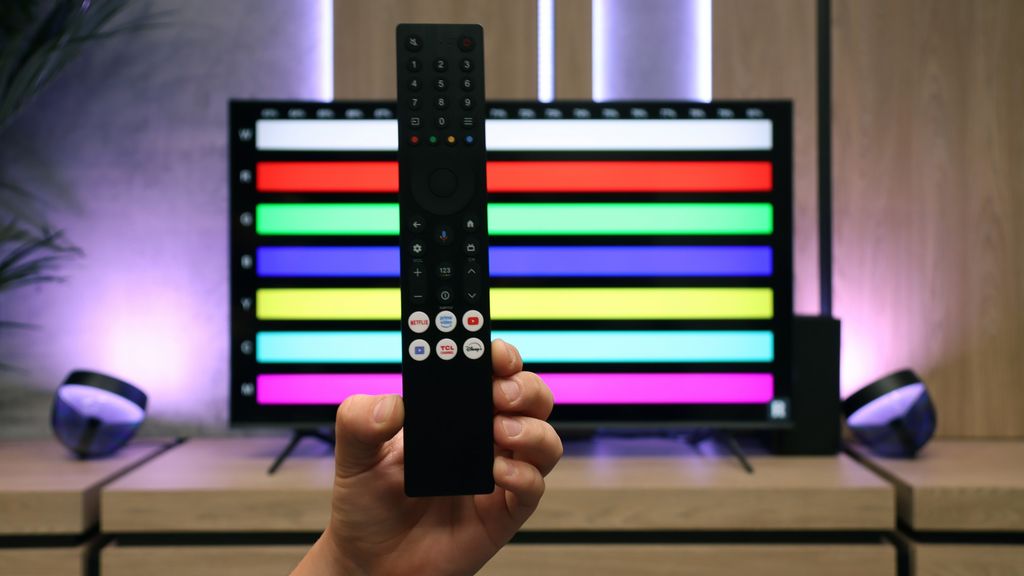
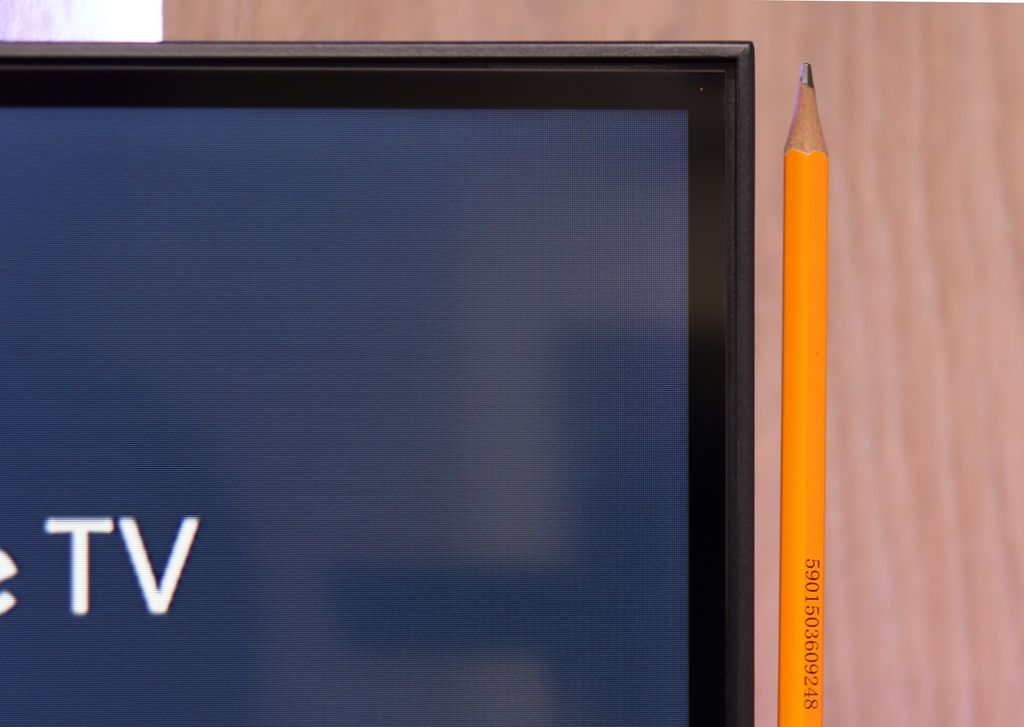

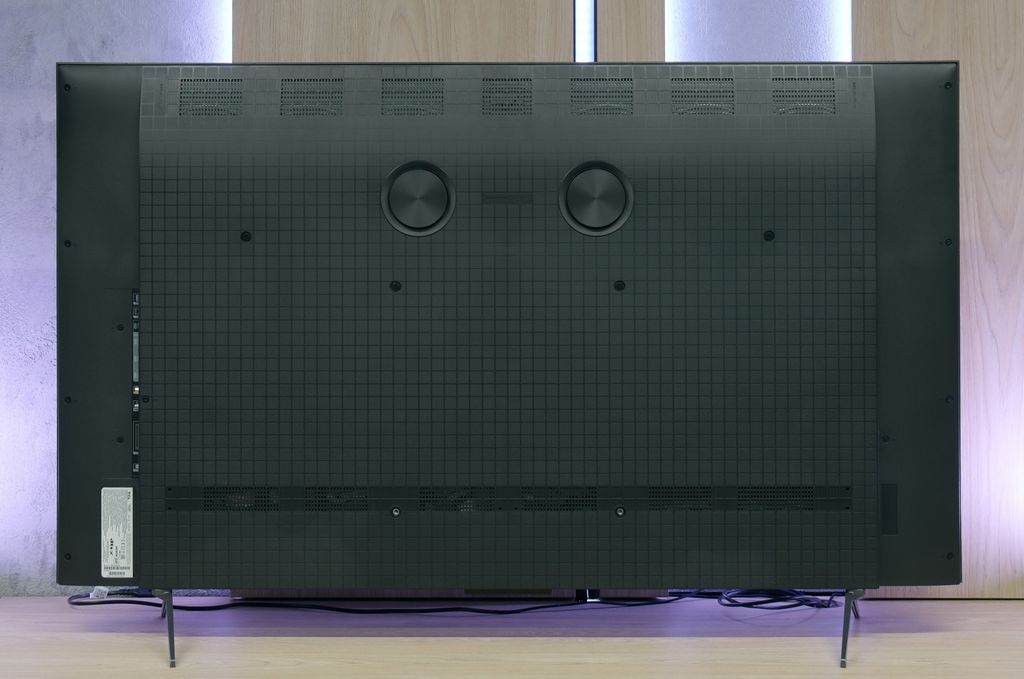
Contrast and black detail
7.3/10
7.5/10
Local dimming function: Yes, number of zones: 180 (10 x 18)
Local dimming function: Yes, number of zones: 180 (10 x 18)
Contrast:

Result
114,000:1

Result
17,300:1

Result
16,200:1

Result
9,900:1

Result
4,850:1

Result
129,650:1

Result
26,650:1

Result
12,900:1

Result
12,600:1

Result
6,250:1
Halo effect and black detail visibility:


The TCL C6K is based on a VA matrix, more specifically HVA produced by TCL CSOT, which already provides a solid native contrast of 6000–7000:1 without the use of local dimming. However, the real strength of this model is the Mini-LED backlighting with the ability to dim individual zones. In the tested 55-inch version, we counted about 180 of them, and as the diagonal increases, this number naturally rises. For a television in this price segment, the contrast is truly impressive. In simpler film scenes, such as excerpts from "Oblivion," it performs excellently, and shots completely filled with black make a great impression. Of course, due to the nature of Mini-LED technology, it’s not always possible to avoid issues – in more challenging frames with many bright details, halo effects or too strong dimming of some elements appear (regardless of local dimming settings). Nevertheless, the contrast can be considered a strong point of the C6K.
Let's move on to what tigers like best, which is black and contrast. If you were worried that the lower price of the C6KS model (C69KS/Q6CS) was due to drastic cuts in image quality, I have great news for you regarding black levels and contrast. In direct comparison with the more expensive C6K, the tested model hardly falls short at all. Just like in the higher series, we find a VA panel supported by a local dimming system. What’s most interesting – and here’s a big surprise – during the tests, we counted exactly the same number of dimming zones in the C6KS (of the same size) as in the tested more expensive counterpart! The black levels are very good. The contrast measurement results speak for themselves – for such a relatively inexpensive television, the black is deep and free from major issues that often plague budget models without local dimming. Of course, we can't cheat physics. We must expect that in very demanding scenes (e.g., bright text on a black background), we will sometimes notice undesirable effects such as blooming (halo effect around bright objects). However, this is not something that disqualifies this television – overall, the black levels are at a very decent, satisfying level.
HDR effect quality
4.9/10
4.9/10
Luminance measurements in HDR:

Result
612 nit

Result
202 nit

Result
424 nit

Result
144 nit

Result
587 nit

Result
602 nit

Result
204 nit

Result
421 nit

Result
152 nit

Result
590 nit
Scene from the movie “Pan” (about 2800 nits)


Scene from the movie “Billy Lynn” (about 1100 nits)


Static HDR10


Dynamic: Dolby Vision
Dynamic: Dolby Vision


HDR luminance chart:
TCL C6KS / C69KS / Q6CS
HDR luminance
TCL C6K
HDR luminance
TCL C6K is a moderately bright TV that can showcase its full potential under the best cinematic conditions – the maximum brightness is around 600 nits. In scenes with large, intense light sources, the HDR effect can be really satisfying, providing a sense of cinematic brilliance. However, it should be noted that when managing the backlighting zones, there are situations where some elements become dimmed and sometimes can even become barely visible. It is clear that there is a lack of proper algorithm optimization here, although looking at the technical parameters in this price range, the design itself performs very well.
And how does the issue of HDR look? Here the C6KS performs quite well and – as is becoming a recurring theme in this review – identically to the C6K model. The maximum brightness generated by this television is around 600 nits. In bright scenes, this translates to a really solid, cinematic effect, and generally, the video materials look good here. However, one must remember the specifics of the dimming algorithm in this model. When very small, bright points (e.g., stars) appear against a dark background, the television can dim them quite significantly. The goal is simple: to eliminate blooming and maintain the best possible black levels. It’s a reasonable compromise. Most viewers will definitely appreciate deep, “true black” more than additional micro-details that could cause grayness on the screen. Such is the nature of local dimming technology in this price range, and one must be aware of it. It’s also worth noting that the TCL C69KS (C6KS) has an additional PFS coating, which is marketed under the tagline of QLED technology. Thanks to this, the colors are saturated and vibrant – our measurements showed that the coverage of a wide color gamut reaches 92% here.
Factory color reproduction
5/10
5/10


Factory Mode
After calibration
This year's TCL televisions feature a Filmmaker mode, and it must be admitted that it is definitely the best choice straight out of the box. This is the mode we recommend for everyday watching of movies and series. Unfortunately, as is often the case, the best doesn't mean perfect. In the case of SDR content, the image was too warm because the red was strongly emphasized in the white balance. On the other hand, with HDR content, we had the opposite impression – the image became cooler than it should have been due to excess blue. Additionally, the brightness characteristic sometimes led to highlights being blown out. In practice, this resulted in quite noticeable color test inaccuracies that are hard to accept in a mode advertised as "by the creators."
Unlike the more expensive C6K model, the tested C6KS does not have an option labeled Filmmaker Mode in the menu. Is this a reason to cry? Absolutely not. Our tests have shown that in practice, in terms of color reproduction, the absence of this specific label makes virtually no difference. The best available Film/Cinema mode here offers nearly identical picture characteristics to the aforementioned Filmmaker mode in the more expensive model. So we get a very similar image, just under a different name. So if you were wondering whether paying extra for the C6K gives you better colors – the answer is: no, in both cases the base is the same and requires slight adjustments.
Color reproduction after calibration
7.5/10
7.5/10




Thanks to the white balance correction, it was possible to significantly reduce the C6K's tendency to distort colors, which resulted in a very good final outcome. After calibration, we will no longer observe the effect of excessive warming of scenes in SDR or overly cooling the image in HDR. However, it is worth taking a closer look at the brightness characteristics. In SDR content, there are few complaints – the image looks really good, especially in older movies, TV shows, or materials from YouTube. This is much worse for HDR content. Analysis of the EOTF curve suggests that everything is fine, but in practice (EOTF in films), the limitations of the construction become apparent. The TV tends to overly brighten the smallest parts of the frame, and in other situations, it can dim the entire scene too much. The effect of calibration is therefore evident, and in terms of color, the C6K has gained quite a lot, but certain limitations arising from local dimming and, in fact, its management by the C6K simply cannot be overcome.
Thanks to the white balance adjustment, the tendency of the C69KS to distort colors has been effectively reduced, leading to a very good final effect. After calibration, we won't see excessive warmth in SDR scenes or overly cool tones in HDR. However, it's worth noting the brightness characteristic. In SDR content, there are hardly any objections – the image looks very good, especially in older films, television programs, or materials from YouTube. It is much more difficult to evaluate the performance of the television in HDR. Analysis of the EOTF curve suggests correct behavior, but its practical variant shows certain limitations. The C69KS can overly brighten the smallest elements of the frame, while at other times it can dim the entire scene. Calibration has therefore brought clear benefits in terms of color reproduction, but certain limitations arising from the operation of local dimming and the way it is controlled by the C69KS cannot be avoided, as we also saw in the C6K test.
Smoothness of tonal transitions
9.5/10
4.8/10












The transitions between colors in the C6K are very smooth, and it's hard to find any banding. The image looks natural, and any minor imperfections can only be noticed on bright test patterns – and that with really careful viewing. In everyday use, the effect is simply great, and one can confidently say that in this category, the C6K performs exceptionally well.
Looking solely at the smoothness of tonal transitions, the C69KS gives no real reason for complaints. The gradation of colors proceeds correctly, and more challenging sequences do not reveal significant problems. Therefore, you might be surprised by the low score in this category. This is due to very strong dithering and artificially boosted "resolution," leading to a grainy and unnatural character of the image. For this reason, the final score is significantly lower, despite the correct gradation of the tonal transitions themselves.
Image scaling and smoothness of tonal transitions
5/10
5/10
Smooth transition function


Image without overscan on the SD signal


The TCL C6K performs quite well in terms of scaling. Lower quality materials look acceptable, and the lack of overscan issues means that the image is displayed in full, without cropping. However, one cannot expect miracles – content of very low quality will not gain new life here, as the image processor has its limitations. On thin lines or details, the characteristic tearing is visible, which reveals the absence of advanced image enhancement algorithms. It is also a pity that the C6K lacks the feature for smoothing tonal transitions – in older films or video materials, color banding can be noticeable and may be bothersome during long viewing sessions.
C69KS handles upscaling quite well. The tested 576p material looks surprisingly decent – a significant amount of detail is preserved, and the algorithm adds a subtle "rounding" effect to sharp edges, making the image appear more cohesive. However, the smoothing of tonal transitions is lacking. The television practically cannot improve them, leaving the image in a somewhat raw state. With older materials, this can be simply exhausting, as the lack of additional processing highlights all imperfections.
Blur and motion smoothness
7.3/10
4.9/10
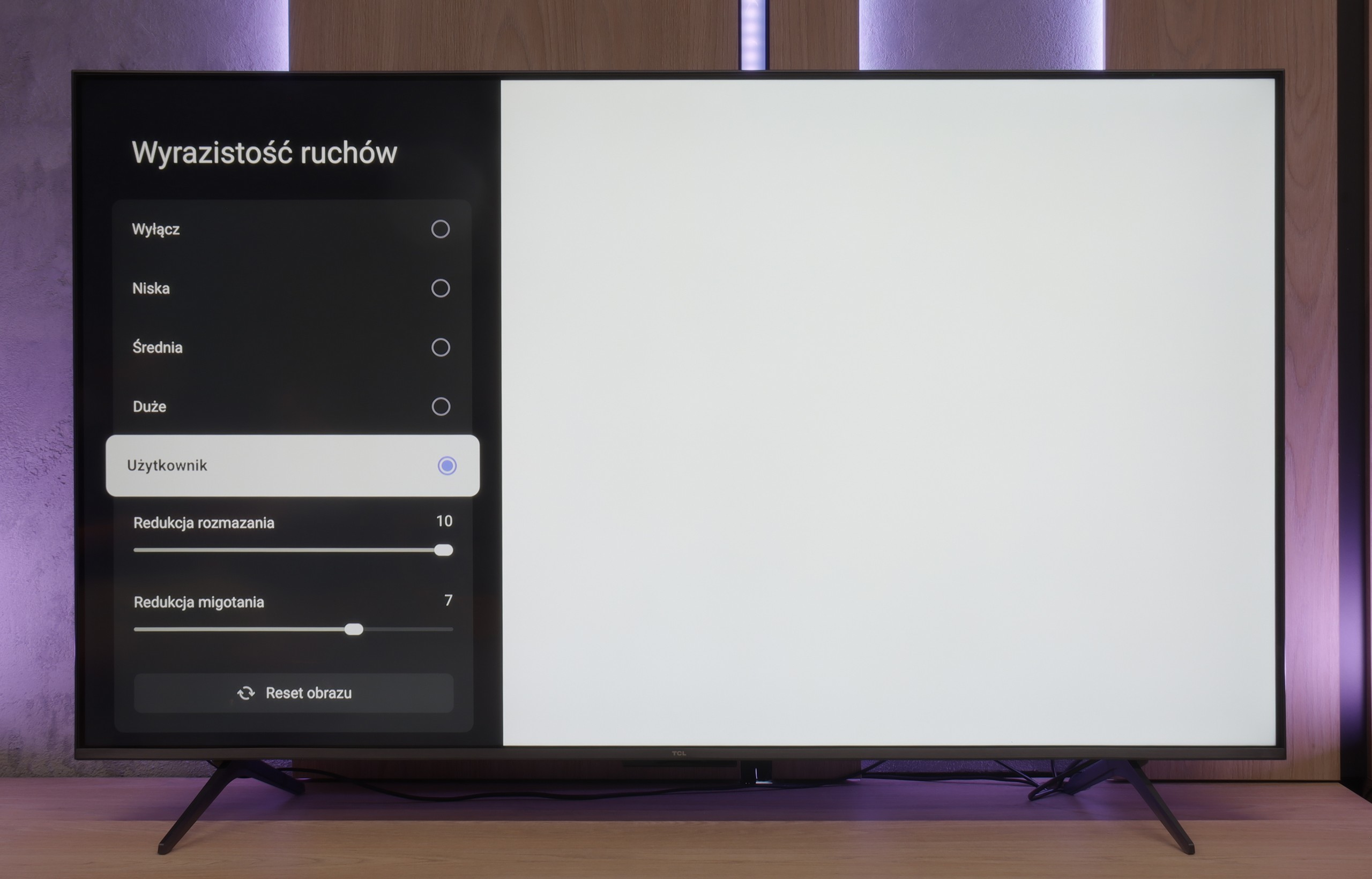
Blur (native resolution, maximum refresh rate):






Blur (BFI function enabled):



Blur ():
Blur (4K@144Hz):


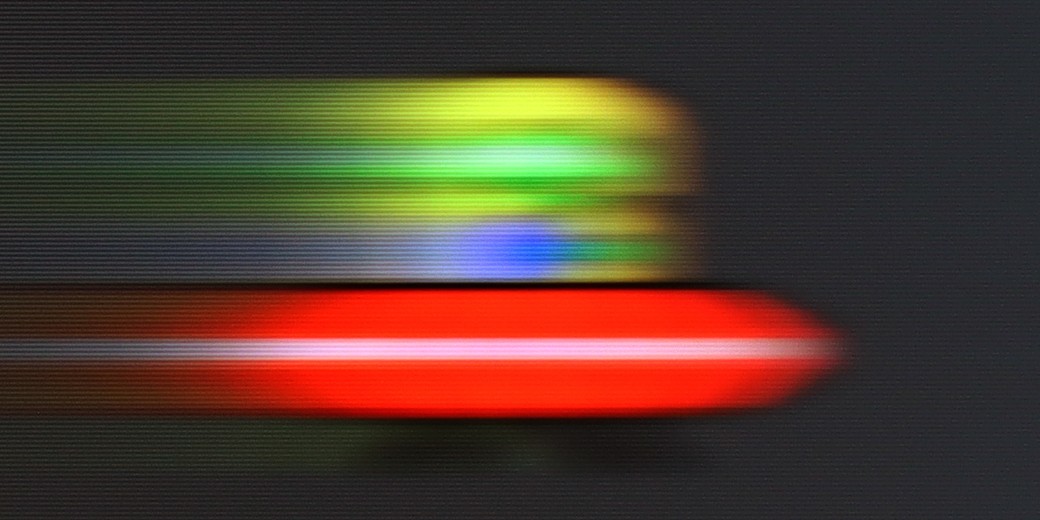
TCL C6K features a 144 Hz panel, which is a significant advantage in this price range. This is an important step forward compared to the previous model C655 PRO, which offered only 60 Hz at 4K. The difference is especially noticeable when watching sports or playing games – the ball, athletes, or fast action in a game are displayed more clearly and without losing details. An interesting fact is also the ability of the panel to operate at 240 Hz, which the manufacturer does not mention in official materials. We will return to this topic when discussing the game mode for PC.
TCL also added a feature for movie watchers: "Motion Clarity," which allows you to adjust the image to your preferences using two simple sliders. You can keep the movie frame visible or opt for a very smooth, almost theatrical effect. This way, everyone can find settings tailored to their taste.
C69KS offers a simplified motion improvement panel in movies, allowing you to adjust the intensity of the effect using a slider. This makes it easy to match the smoothness to your own preferences. The possibility of using higher refresh rates is also a plus – even though the panel operates natively at 4K at 60 Hz, lowering the resolution to 1440p allows you to enable 120 and 144 Hz modes, both on consoles and PC. This sounds like great news, but in practice, the image at these settings suffers from significant motion blur. The effect is noticeable enough that the overall experience feels simply mediocre and loses its appeal in everyday use.
Console compatibility and gaming features
9.8/10
8/10
- ALLM
- VRR
- VRR range48 - 240Hz48 - 144Hz
- Dolby Vision Game Mode
- Correct implementation of HGIG
- 1080p@120Hz
- 1440p@120Hz
- 4K@120Hz
- Game bar


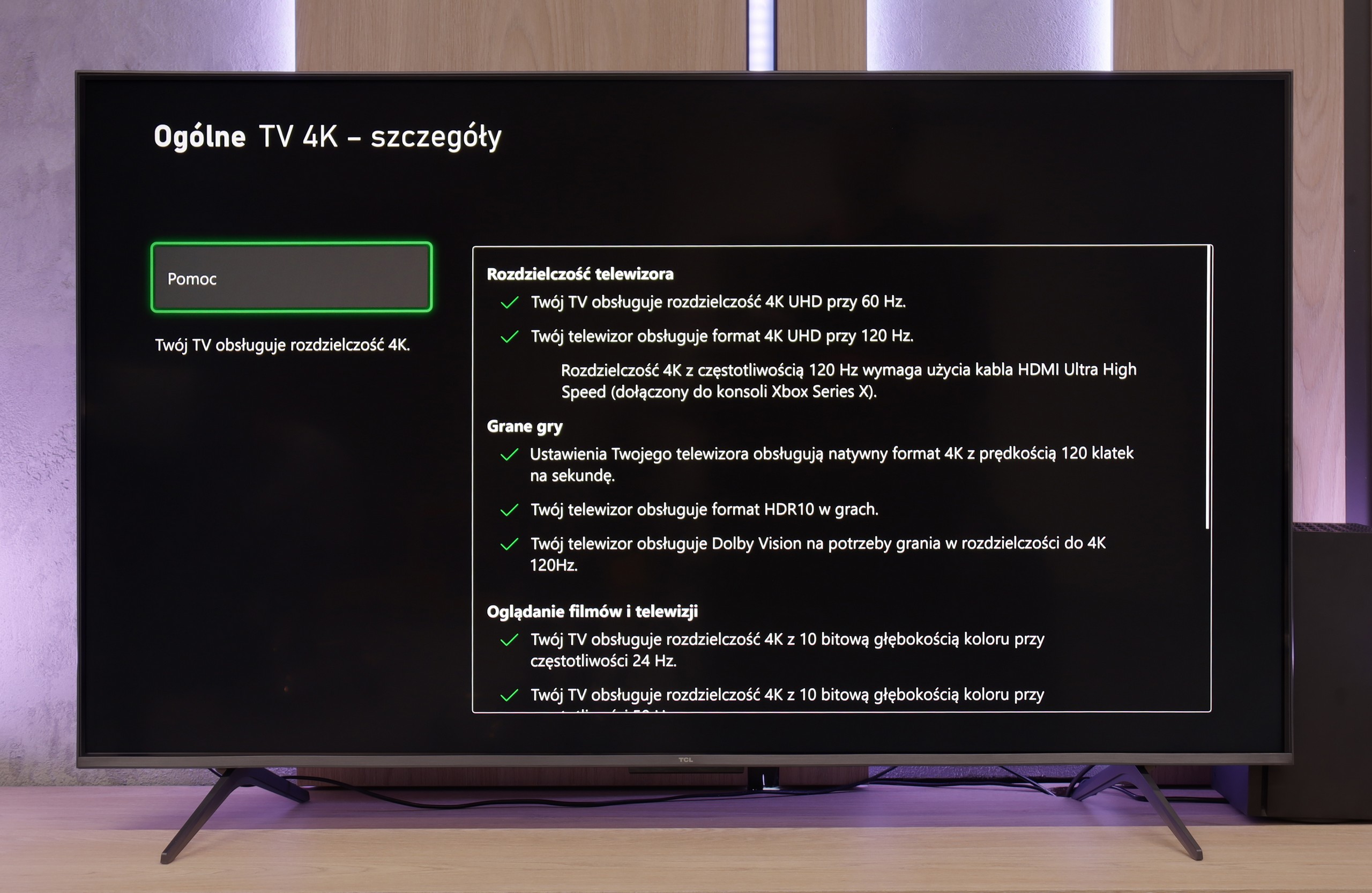
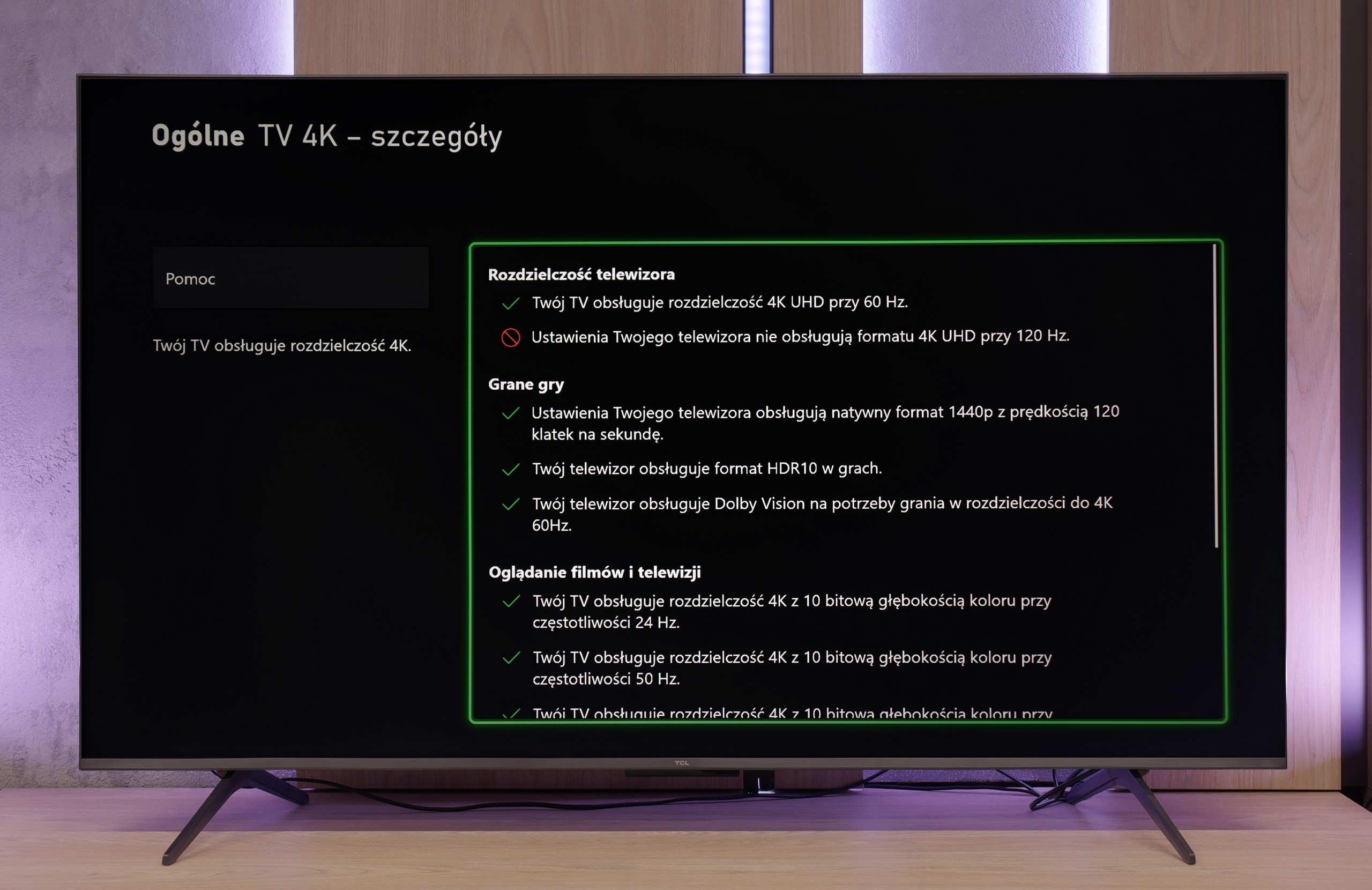
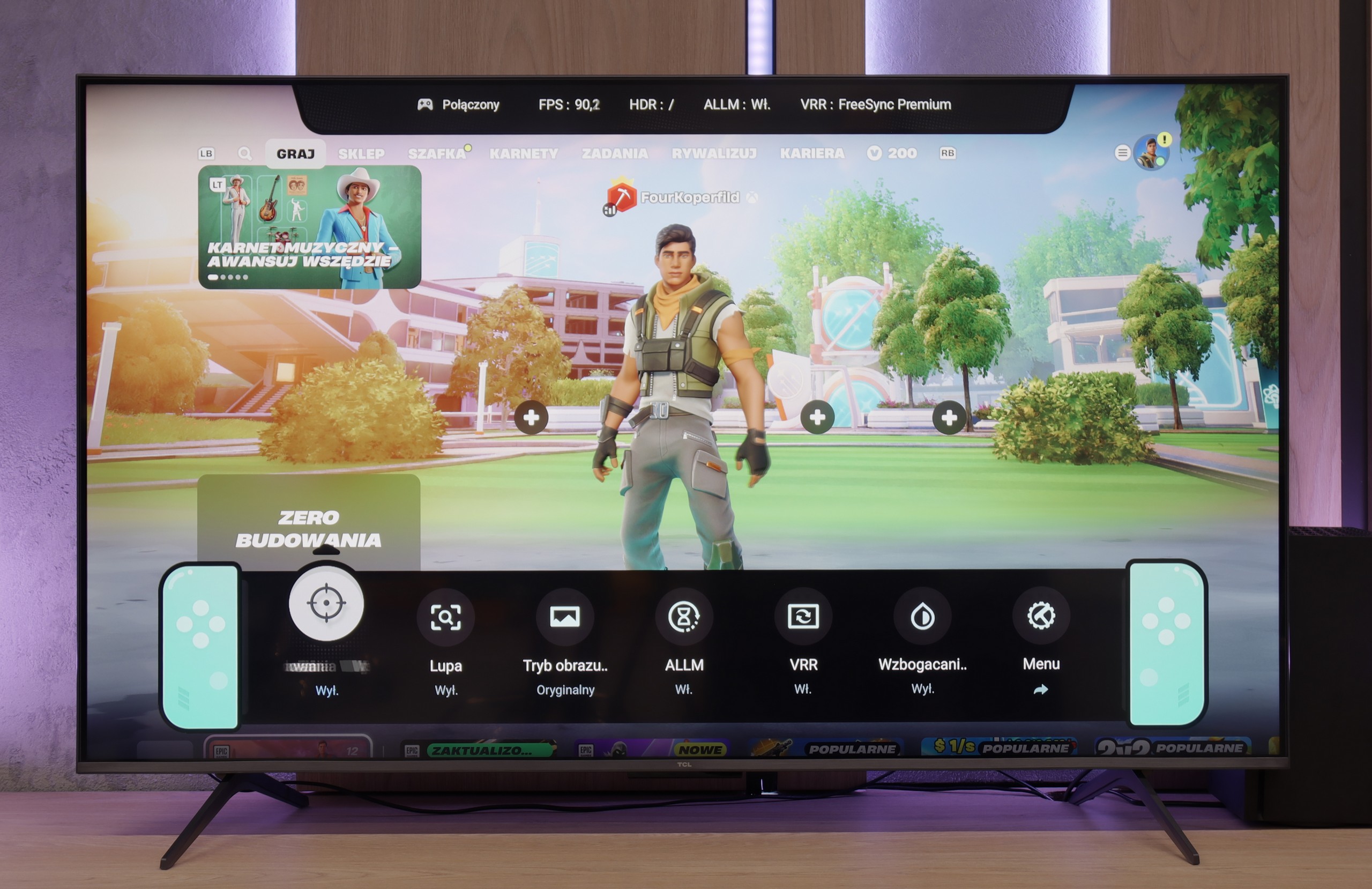

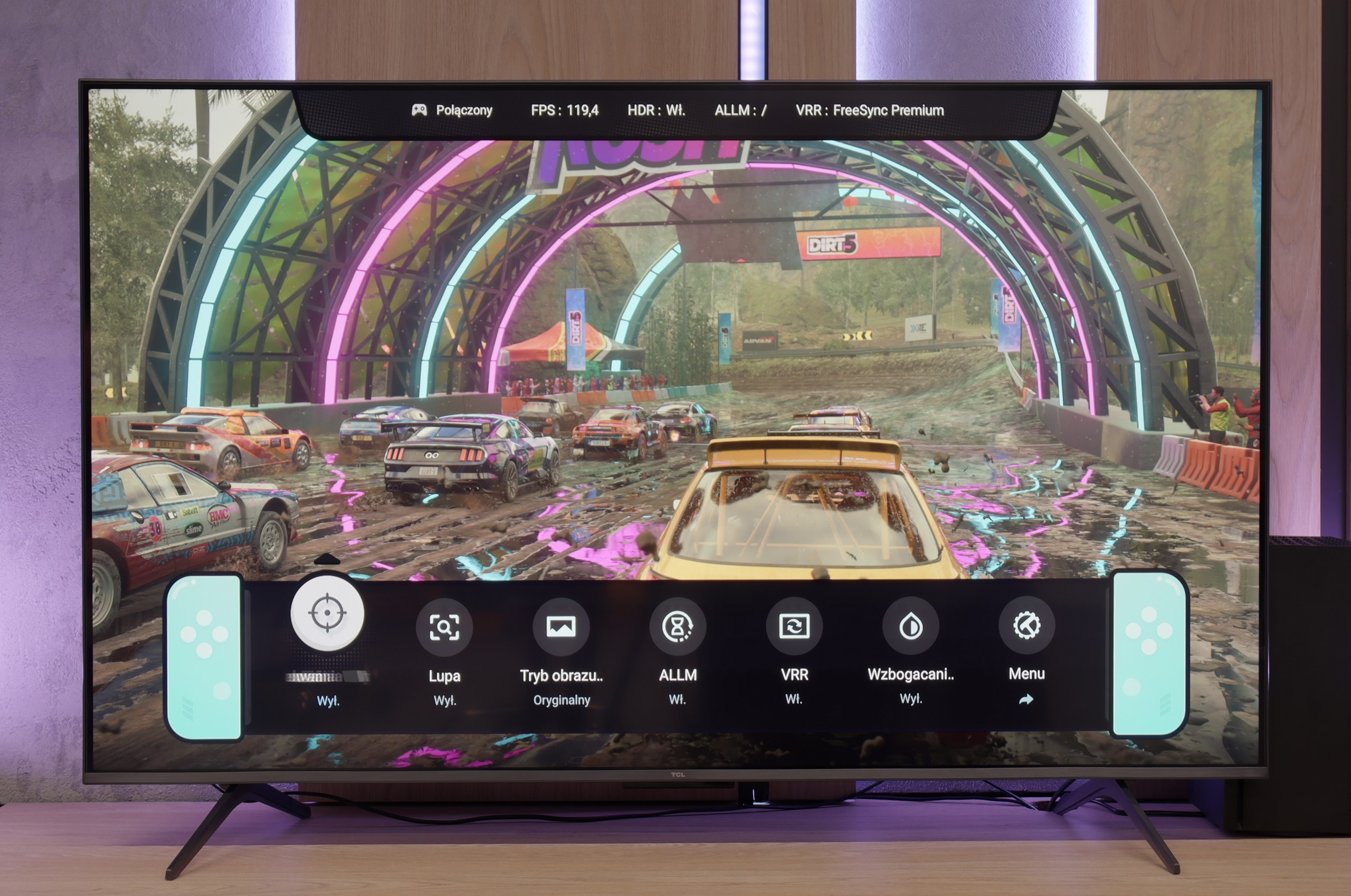

The TCL C6K is a TV that can confidently be called equipment designed for gamers. Here we have 4K at 144 Hz, VRR support, automatic game mode (ALLM), and Dolby Vision Gaming. Additionally, there's a practical Game Bar, a panel with the most important settings readily available – useful when we want to quickly change something during gameplay (e.g., screen aspect ratio: Yes, that’s possible!). The wide VRR range, reaching up to 240 Hz, deserves attention. However, this is mainly an option for PC gamers who drop below the native 4K resolution. Then the TV can spread its wings and show additional smoothness, especially in fast-paced e-sports titles. In the case of consoles, we stick to the classic limit of 120 Hz, but the possibilities are still quite broad. The only drawback is a slight ghosting that can sometimes be seen in dynamic scenes. Other than that, the C6K offers everything gamers expect from a TV.
If we overlook the smearing and lack of native 4K at 120 Hz, the C69KS impresses with how well it performs during gaming. We get everything you can expect from a gaming television: variable refresh rate (VRR), automatic switching to game mode (ALLM), Dolby Vision Gaming mode, and a reasonably functioning HGiG. The TV can also operate at 120 and even 144 Hz at lower resolutions, allowing for smoother gameplay on console or PC. Additionally, there is a clear Game Bar that lets you quickly glance at key settings during gaming. As a result — despite a few limitations — the C69KS can be a truly successful screen for gamers.
Input lag
9.7/10
10/10
SDR
HDR
Dolby Vision
In terms of input lag, the TCL C6K performs excellently. With 120 Hz content, the delay is around 10 ms, and at times even less. This is a level at which the response is practically instantaneous, and it's hard to find any objections. For 60 Hz materials, the result is about 18 ms – still a very good result, more than sufficient for comfortable gaming.
TCL C6KS performs very well here — the latency drops below 10 ms, which makes reactions in games instantaneous. This is an excellent result in this class and definitely good news for those playing dynamic titles.
Compatibility with PC
8.6/10
1.7/10

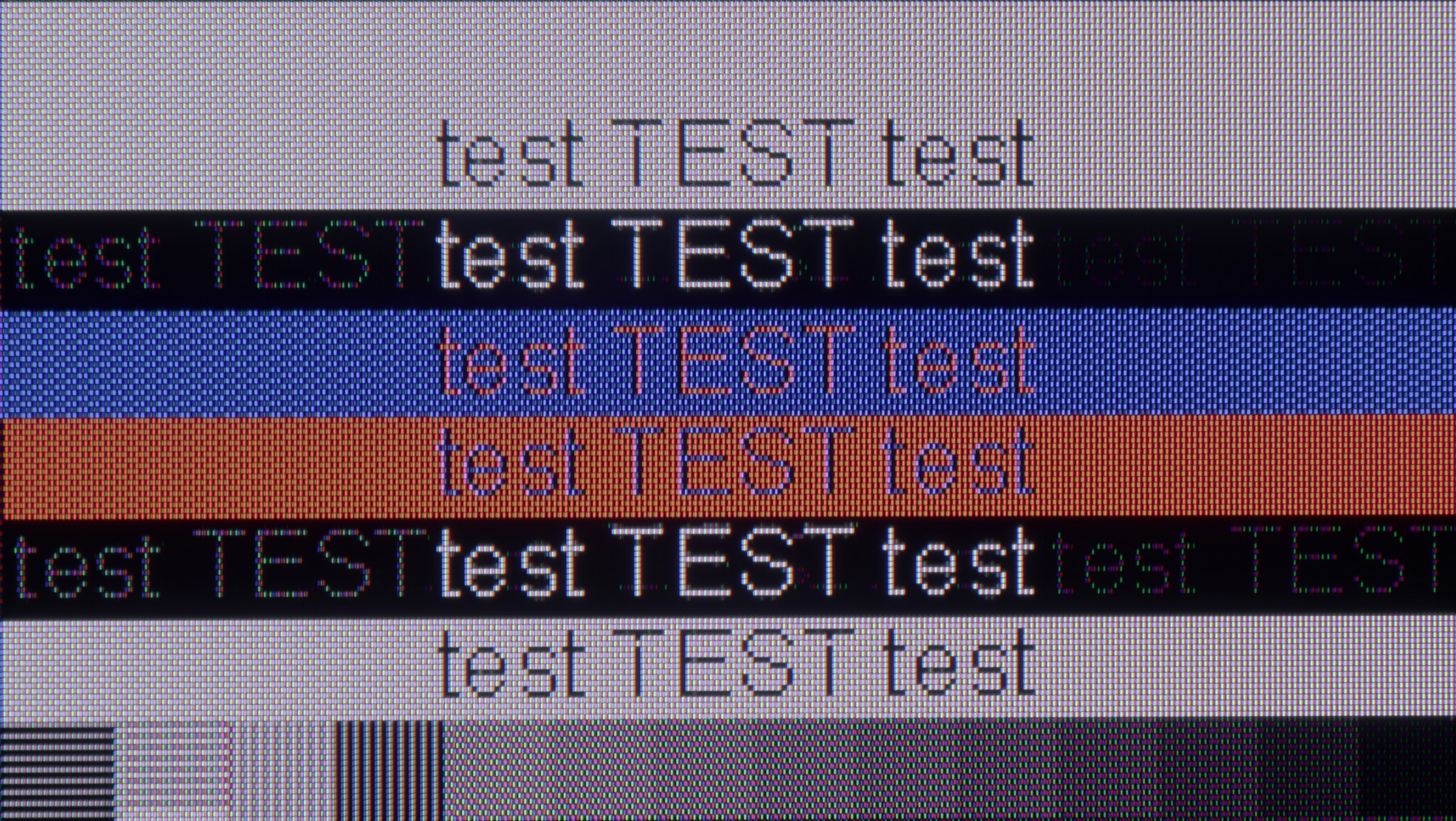
After connecting the TCL C6K to a computer, it performs excellently. At native resolution, we have 4K at 144 Hz, and if we lower the resolution, we can even achieve 240 Hz. Additionally, the television is compatible with Nvidia and AMD graphics cards – supporting both G-Sync and FreeSync. It's also hard to find fault with it for office work. Fonts are sharp and readable thanks to 4:4:4 chroma support, and any minor imperfections are so small that they simply go unnoticed in normal use.
Besides the previously mentioned option of operating at 144 Hz at lower resolutions, the C6KS offers nothing that would encourage its use as a monitor. The fonts look really poor—the darkest ones have a distinct rainbow glow, and standard text is surrounded by strange artifacts. The effect is noticeable enough that extended work at the computer can be simply exhausting.
Viewing angles
3/10
2.7/10
In the TCL C6K, the viewing angles are typical for a VA matrix. Sitting directly in front, the image looks very good, but any shift to the side results in a noticeable drop in color saturation and brightness. The difference is particularly visible in colorful scenes – the colors become washed out, and the contrast loses its depth. Compared to IPS panels, this is clearly a weaker result, although the trade-off is better black levels and higher native contrast "something for something."
The viewing angles in C6KS are very poor, typical of VA panels. This is a compromise we pay for by choosing high contrast — the image looks good head-on, but any significant deviation quickly results in drops in brightness and saturation.
Daytime performance
6.4/10
6.6/10
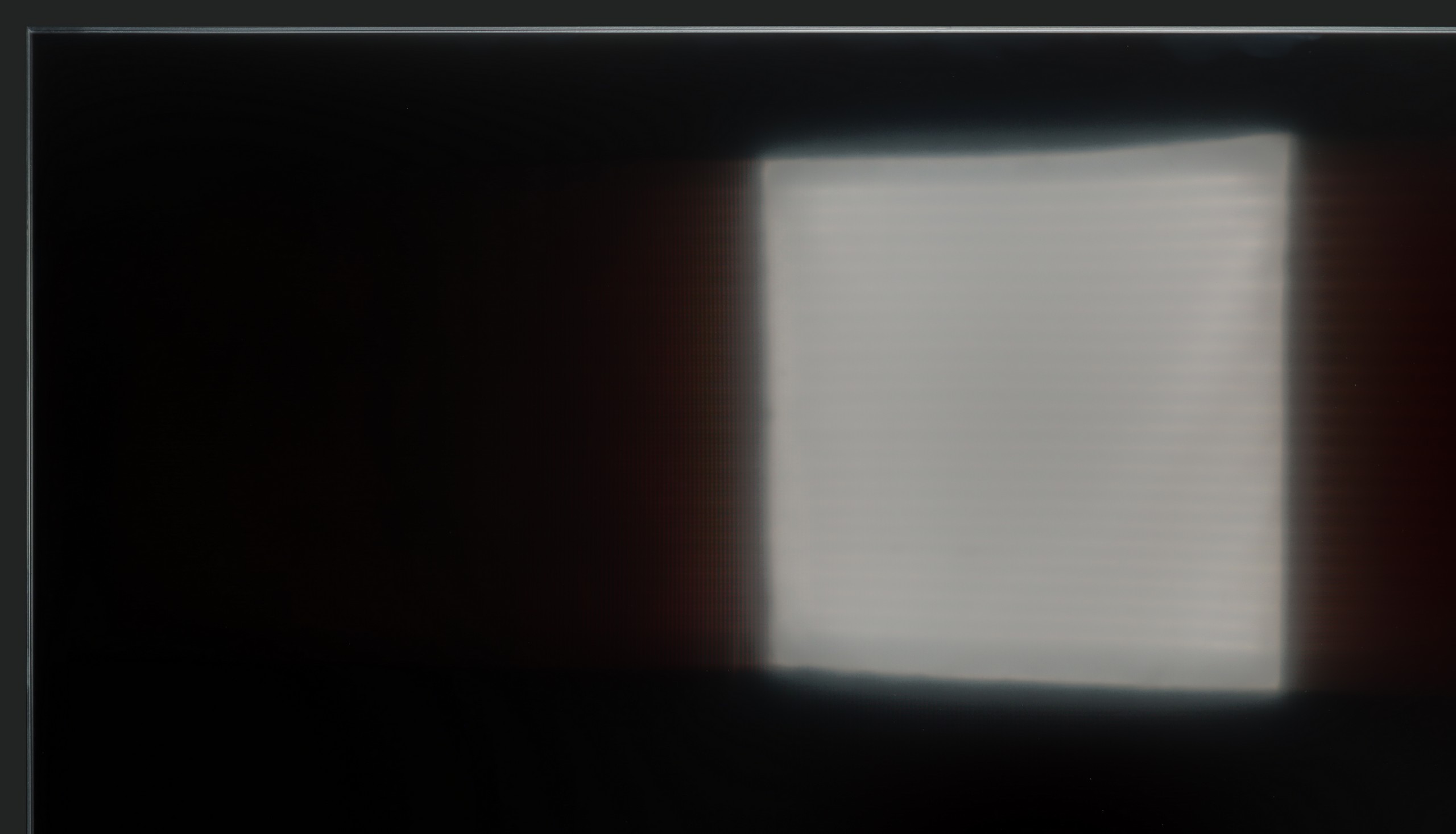
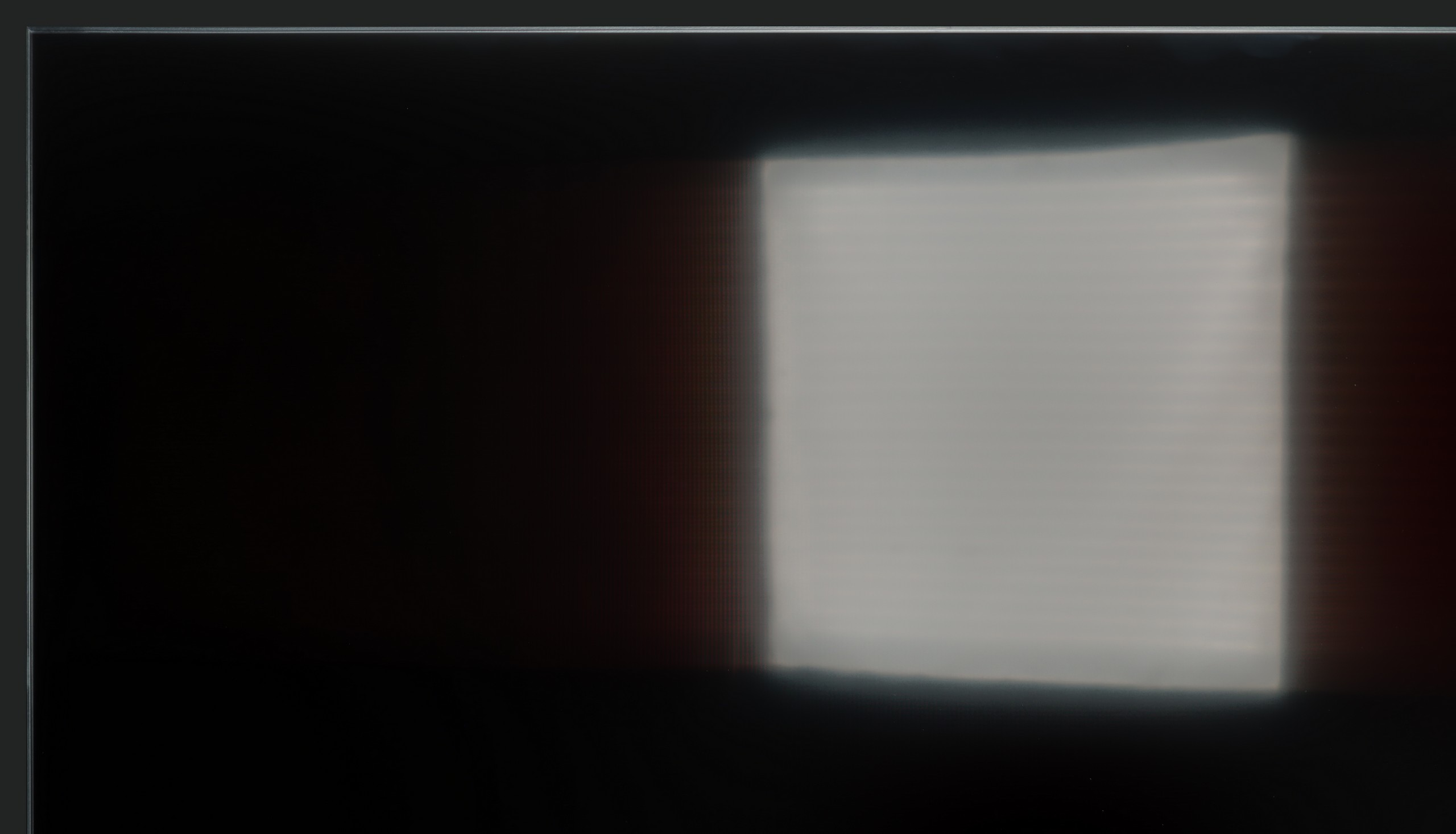


Panel brightness
Average luminance SDR
TCL C6KS / C69KS / Q6CS: 527 cd/m2
TCL C6K: 532 cd/m2
TCL C6K performs quite well in bright lighting conditions. The panel offers decent brightness – in SDR content, it reaches around 550 nits, which allows for comfortable television viewing in an average living room, even on days with strong light coming through the windows. This means that daytime viewing does not require complete darkening of the room. It's also worth noting that the screen coating does a good job of reducing reflections, so the television doesn't turn into a "mirror" even in bright light. However, this is not the level of top models with more advanced anti-reflective coatings – in very challenging conditions, such as with large windows, reflections will be noticeable.
C6KS performs really well as a TV viewing screen during the day. Its brightness of around 500–600 nits easily cuts through challenging lighting conditions. In addition, there is a satin finish that effectively reduces reflections. As a result, the television surprisingly holds up well during daytime viewing, even in brighter rooms.
Panel details
Subpixel Structure:
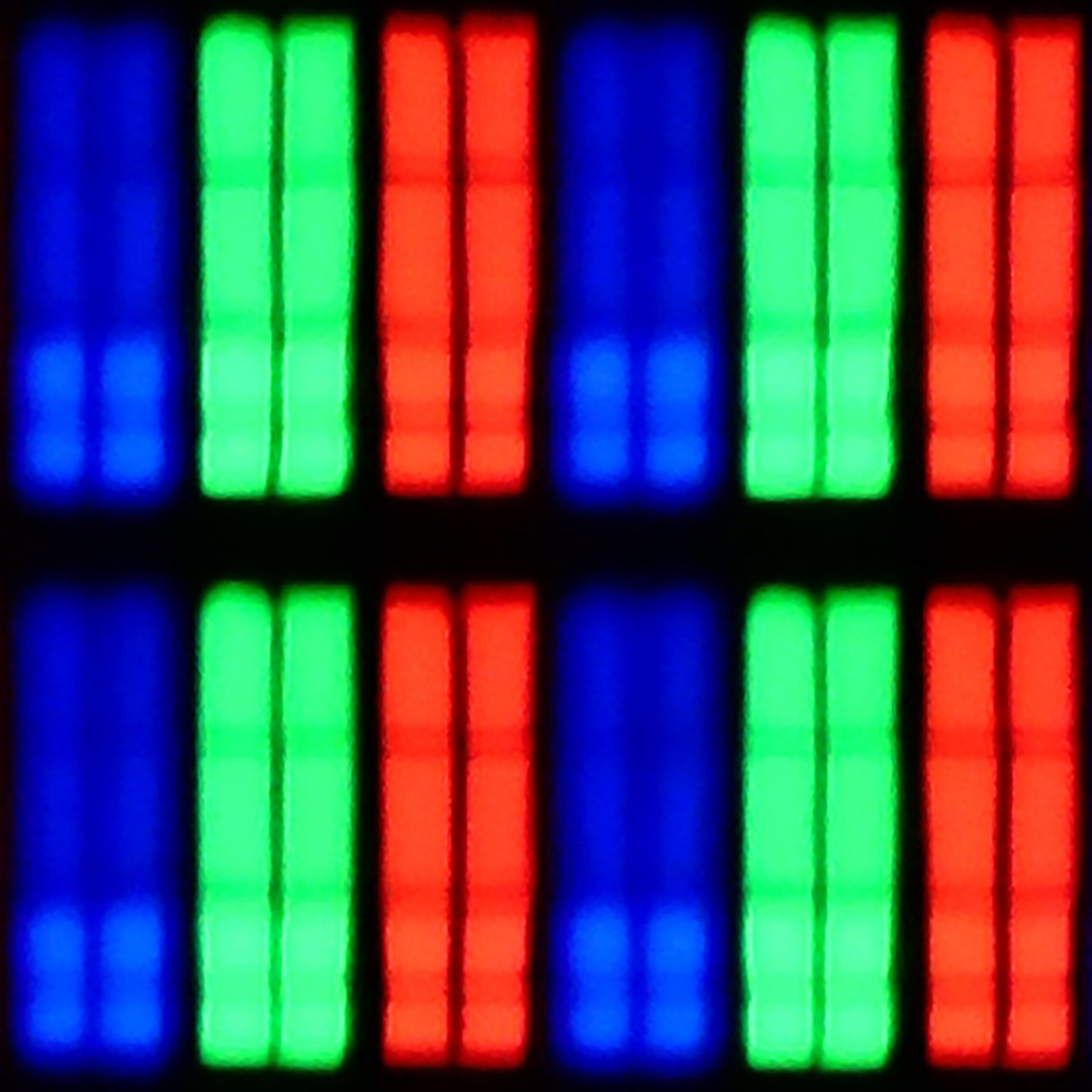
Panel uniformity and thermal imaging:


TCL C6K
TCL C6KS / C69KS / Q6CS
TV features
7/10
7/10
- HDMI inputs2 x HDMI 2.0, 2 x HDMI 2.1 48Gbps3 x HDMI 2.0, 0 x HDMI 2.1
- OutputsToslink (Optical audio), eARC (HDMI), ARC (HDMI)Toslink (Optical audio), eARC (HDMI), ARC (HDMI)
- Network InterfacesWi-Fi 2.4GHz, Wi-Fi 5GHz, Ethernet (LAN) 100MbpsWi-Fi 2.4GHz, Wi-Fi 5GHz, Ethernet (LAN) 100Mbps
- TV receptionDVB-T, DVB-T2, DVB-S, DVB-S2, DVB-CDVB-T, DVB-T2, DVB-S, DVB-S2, DVB-C
Classic features:
- Recording to USB (terrestrial TV)
- Recording programming
- Picture in Picture (PiP)
- RF remote control (no need to aim at the screen)
- Backlit remote control
- Teletext
- Audio only mode
- Bluetooth headphones support
- Simultaneous Bluetooth headphones & TV audio
Smart features:
- AirPlay
- Screen mirroring (Windows Miracast)
- Voice search
- Voice search in native language
- Ability to connect a keyboard and mouse
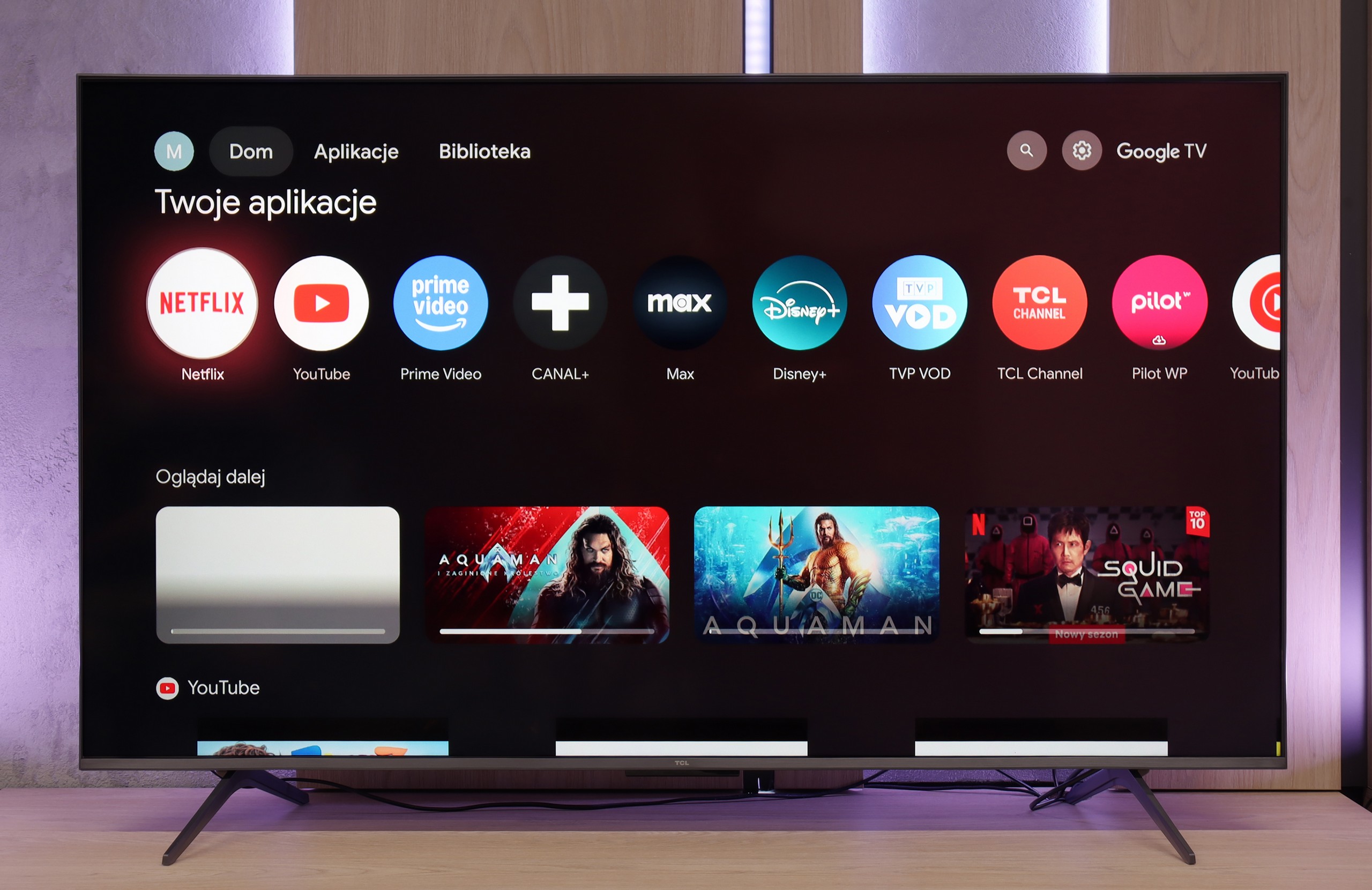
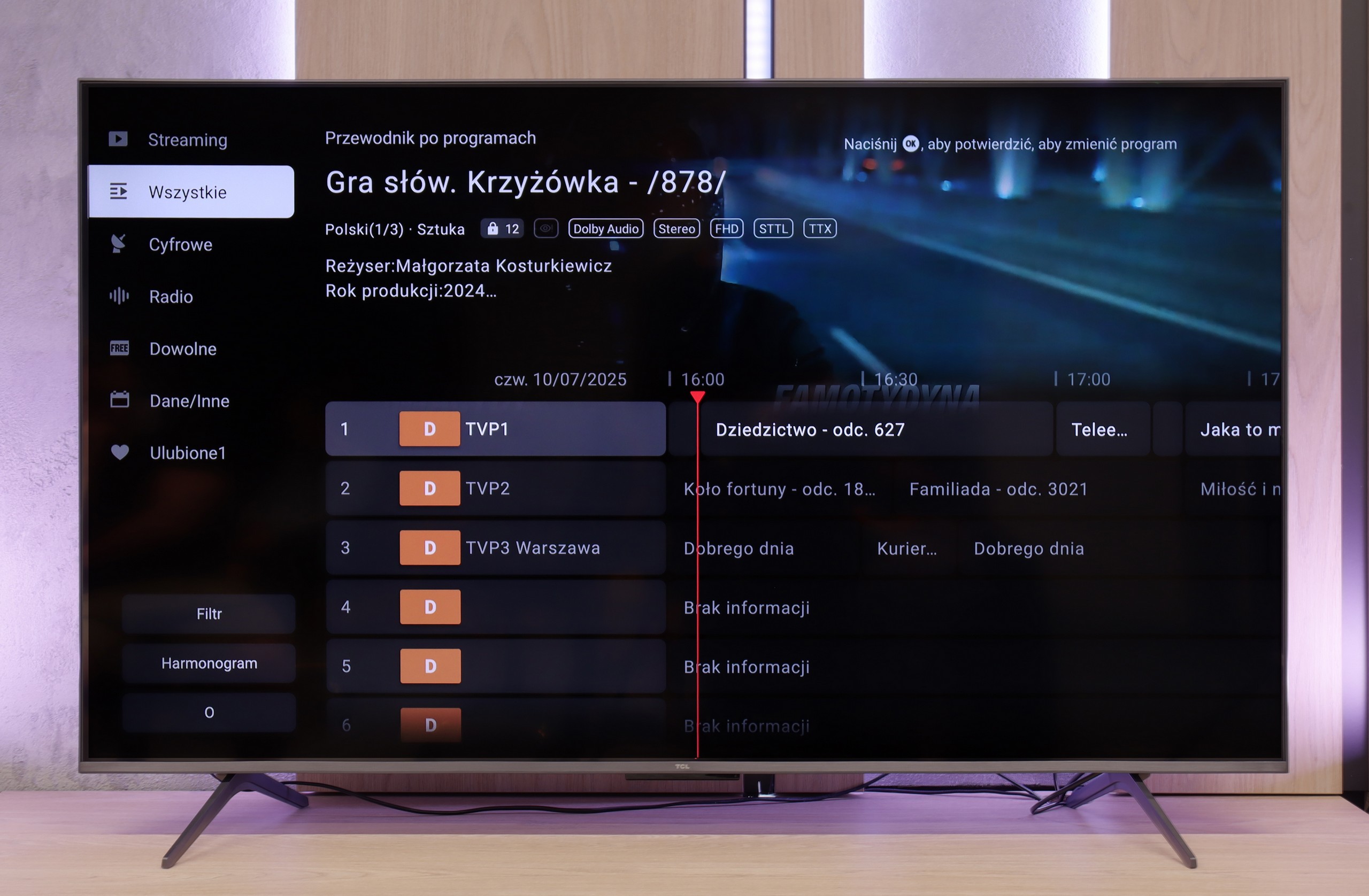
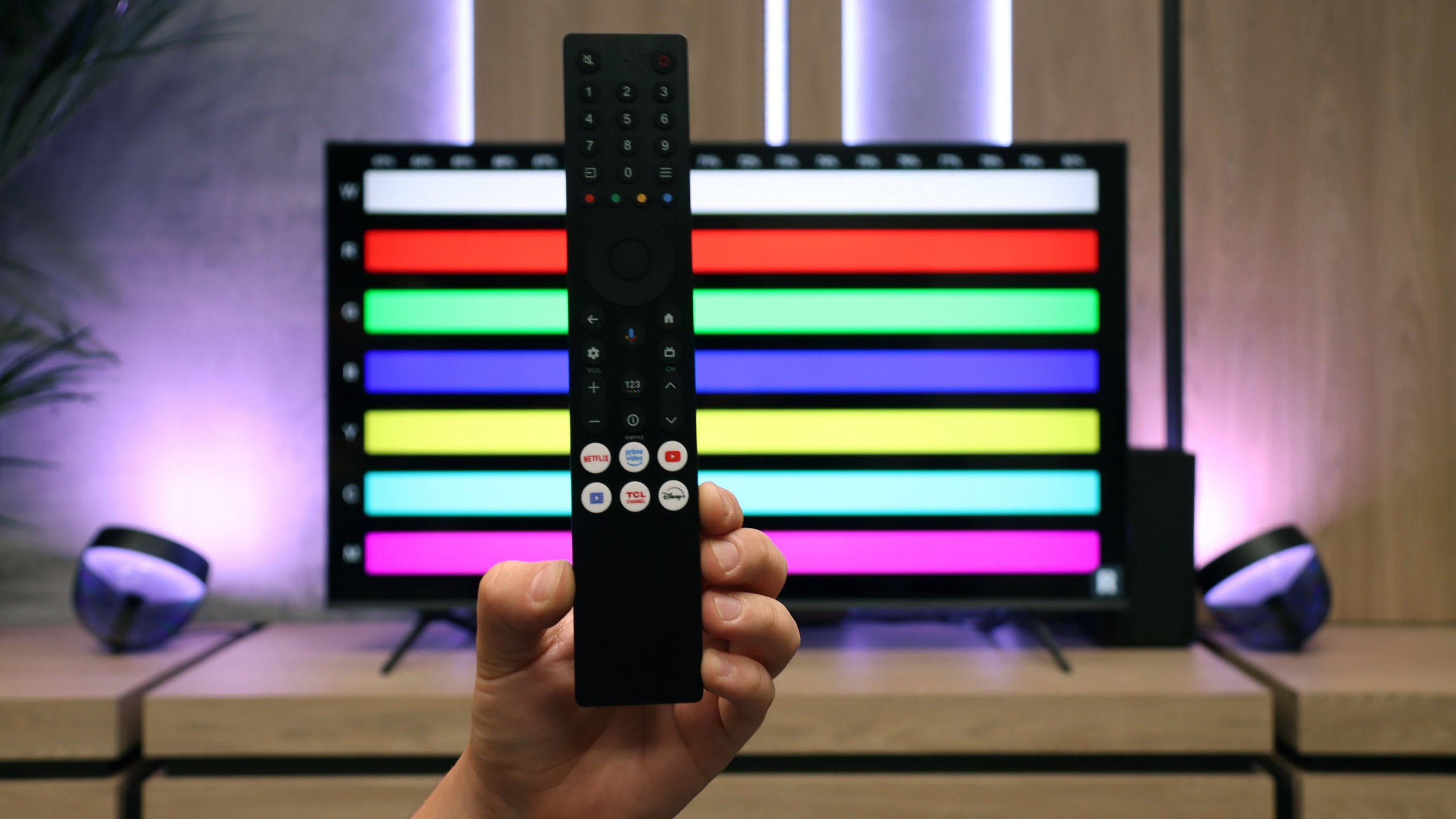


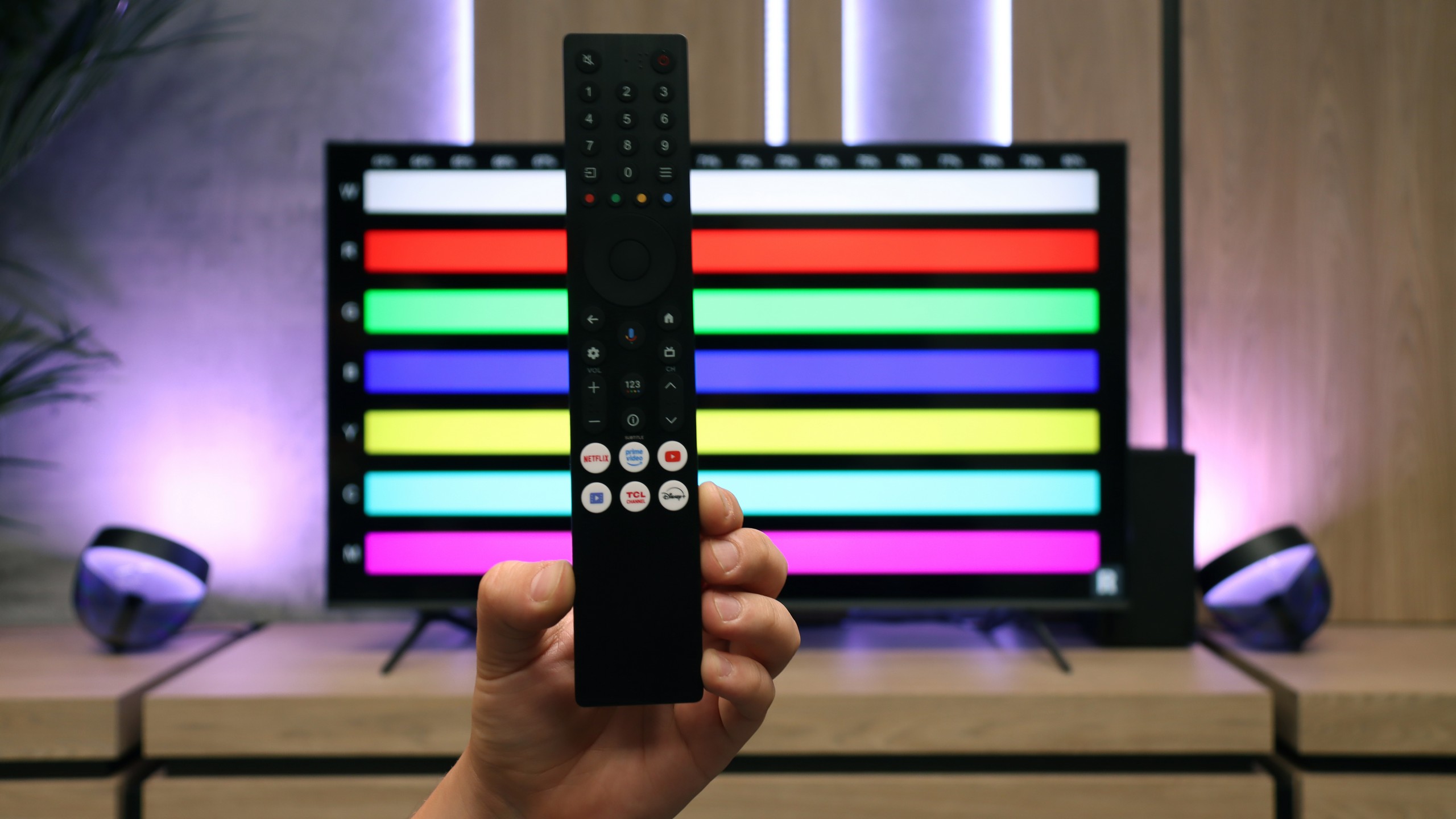
Multimedia Features: Google TV
The strongest user aspect of the TCL C6K is undoubtedly the Google TV system. It gives the television character and provides it with an edge over many competitors. We have a full suite of services here – from support for popular streaming applications, to screen mirroring, all the way to AirPlay, which also makes iPhone users feel at home. In addition, there is Google Assistant (recently in the Gemini AI version), which not only answers questions but also performs simple commands efficiently, e.g., changing channels or searching for content on VOD services. The system itself works quite responsively, although it must be noted that there is a certain drawback – the awkward translations in the Polish menu can evoke a smile, but sometimes require a moment of thought to decipher what is really meant.
Classic Features
When it comes to classic television features, the TCL C6K is rather average. There is no USB recording or PiP mode, which may be disappointing for some. However, the manufacturer did not forget the basics – teletext TV and a clear EPG are available, which still matter to some users. In everyday use, the support for external audio devices via Bluetooth also comes in handy – a simple way to connect a speaker or headphones, which can be a practical solution for seniors. Beyond that, it is difficult to find elements that would distinguish the C6K from its competitors – it is simply a solid, but standard package of basic functions.
The biggest advantage of the C6KS is the Google TV system. It is an environment that offers a lot—ideal for those who prioritize a wide selection of applications and convenient use of streaming services. AirPlay, screen sharing, and voice assistant features work very well here, making everyday use of the television simply convenient.
The support for traditional television is somewhat lacking. Users who expect extensive "TV" features may feel overlooked. Besides the efficiently working Bluetooth remote with a numeric keypad, we won't find conveniences like USB recording or PiP functionality here.
Playing files from USB
8.9/10
8.9/10
Supported photo formats:
Maximum photo resolution:
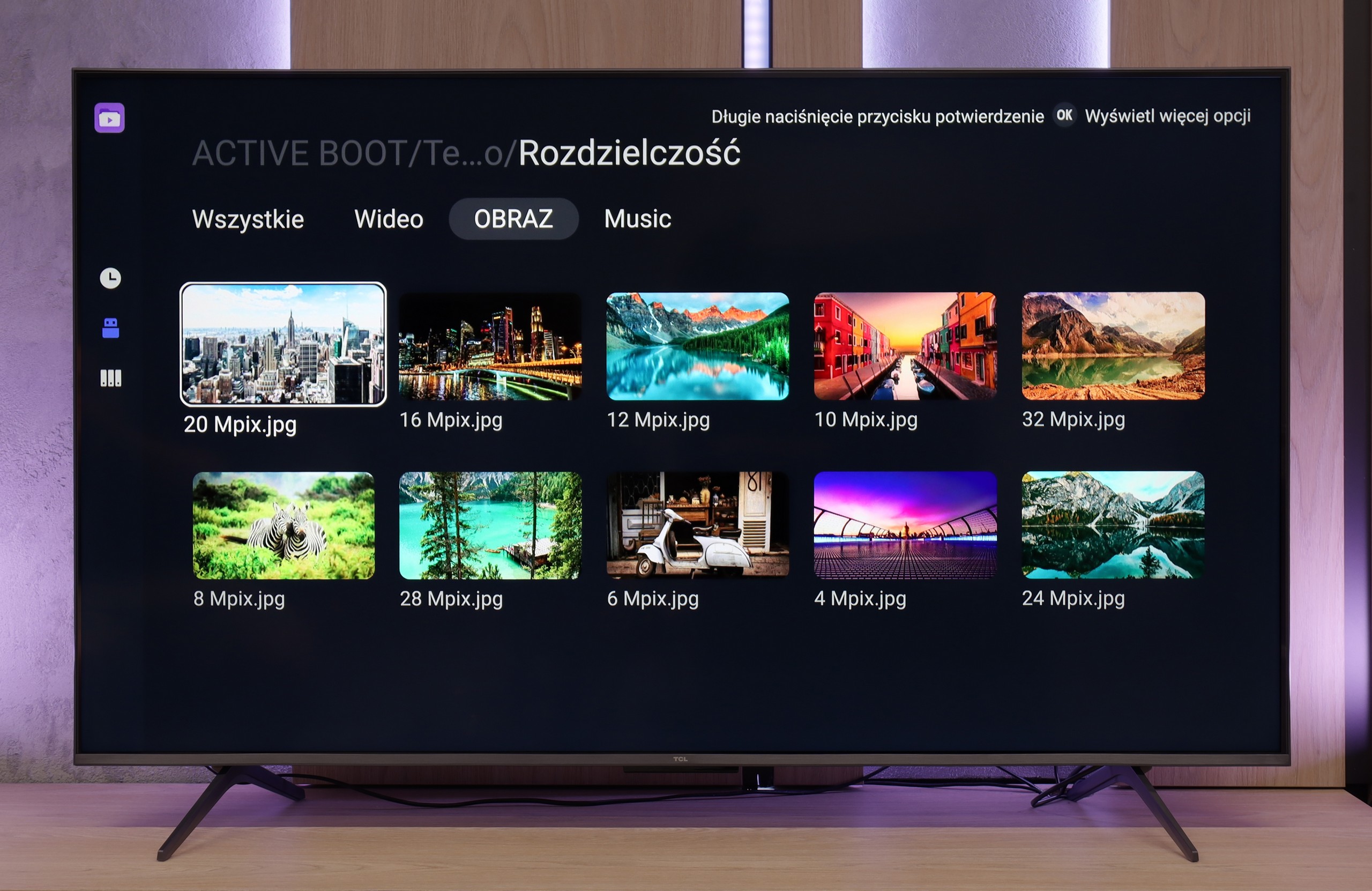
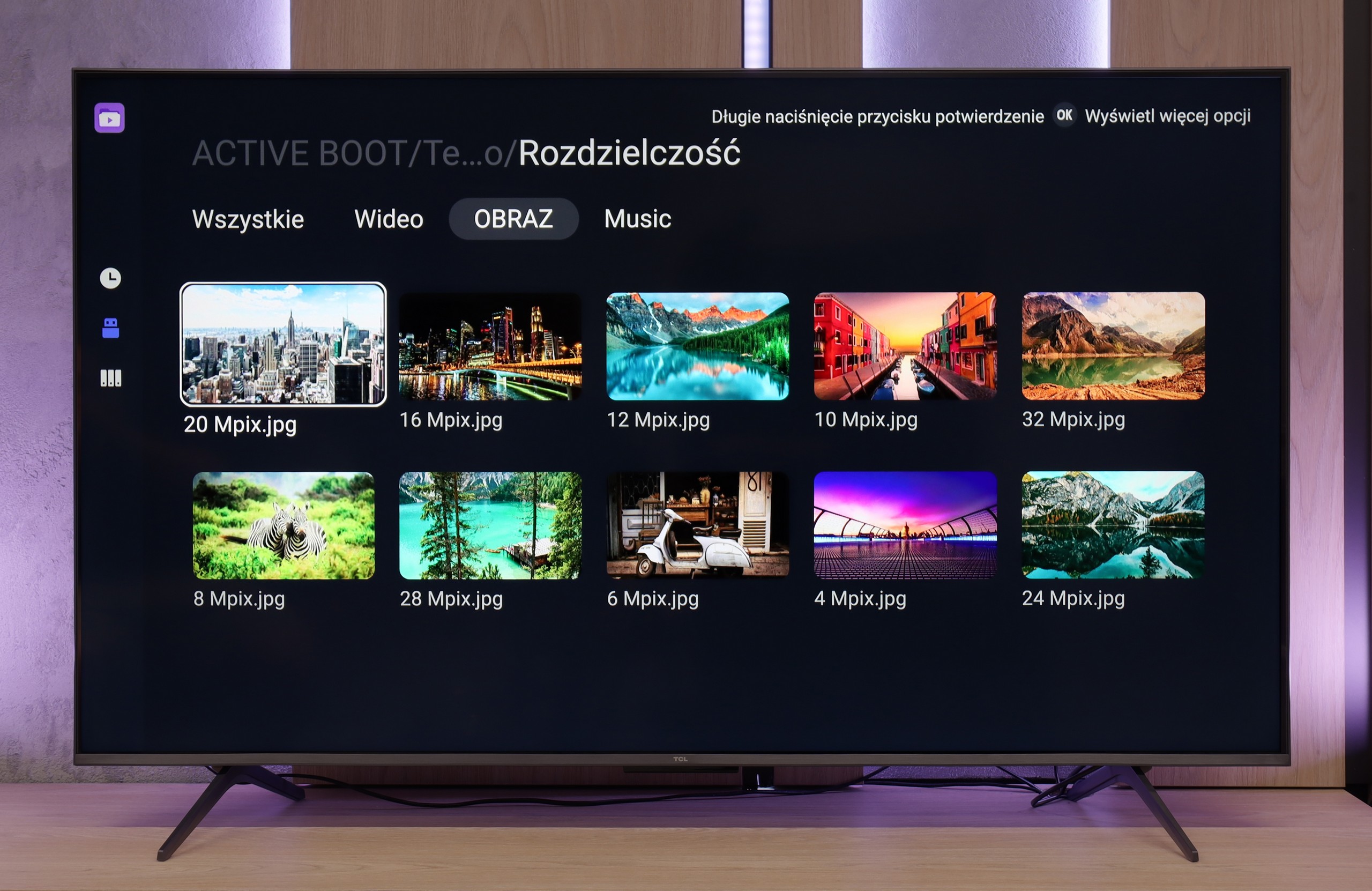
The built-in media player in the TCL C6K performs really well – practically all popular file formats work without major issues. There are, of course, minor exceptions, especially with less common codecs or atypical video file configurations, but in everyday use, this is rarely noticeable. The biggest advantage, however, is that the TV runs on Google TV, which provides full freedom in choosing additional software. If someone encounters a file that the standard player cannot handle, it is enough to install an alternative – such as VLC – and the problem disappears.
The system player really delivers and smoothly handles popular formats. The only hiccup occurs with files from the Apple ecosystem (e.g., HEIC) – here, TCL simply gives up. Fortunately, a huge plus of Google TV is that you can install your own application, such as VLC. This way, you can quickly address the shortcomings of the factory player, allowing you to play practically any material, customizing the TV to your preferences.
Apps
9.6/10
9.6/10














































Sound
6.5/10
6.5/10
- Maximum volume--
- Dolby Digital Plus 7.1
- Dolby True HD 7.1
- Dolby Atmos in Dolby Digital Plus (JOC)
- Dolby Atmos in Dolby True HD
- DTS:X in DTS-HD MA
- DTS-HD Master Audio
In terms of audio, the TCL C6K performs quite well. The manufacturer has been boasting about its collaboration with the Onkyo brand for several years, and it indeed reflects in the sound quality. The audio is pleasant, with clear mids and quite a clean high end, and the whole sound gives the impression of being well balanced. Of course, this will not replace a full-fledged soundbar, especially in terms of bass depth, but for built-in speakers in a TV from this price segment – it's really very good.
TCL C6KS performs almost identically to the C6K model, as it uses the same set of speakers branded by Onkyo. For a television of this class, the sound is quite good — you can even sense a slightly defined bass, which is not often found in budget segments. However, it is worth remembering the proper perspective. This bass performs decently against other televisions, but a home theater setup or even a basic soundbar will still offer a much fuller, more dynamic sound. Therefore, the C6KS is suitable for regular television watching, but if someone is keen on a stronger sound, additional audio equipment will be a natural choice.
